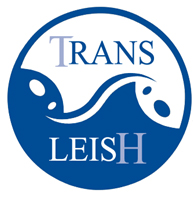Objectives
Intracellular development and survival of the pathogenic L. donovani amastigote stage are highly dynamic events regulated by signalling cascades involving (i) extracellular signals encountered in the host cell phagolysosome such as acidic pH and temperature increase [44] , (ii) stage-specific signalling molecules that are able to sense these cues such as extracellular-regulated kinases [26] , and (iii) downstream phosphorylated substrates that are potentially implicated in virulence and pathogenicity [26] . As part of the FP7 sponsored LEISHDRUG consortium, we delivered the proof that parasite-specific phosphorylation events are essential for L. donovani viability, thus revealing the respective protein kinases as valid drug targets. Using an innovative phenotypic screening procedure, our previous efforts delivered a validated set of kinase-biased inhibitory hit compounds that are part of a unique compound collection established by Partner 3. The major aim of TRANSLEISH is to translate these important findings into pre-clinical application and to coordinate essential steps towards the development of novel anti-parasitic drug leads through three complementary work packages (“Tasks”). The main objectives are:
(i) Identification of anti-leishmanial lead compounds (Task 1) . Utilizing a collection of 118 validated hit compounds that kill intracellular L. amazonensis, we will identify novel anti-leishmanial leads by (i) secondary and tertiary screens on extracellular and intracellular L. donovani, (ii) assessment of their toxicity, selectivity, and pharmacological profiles, and (iii) evaluation of their druggability using structural chemistry approaches. The ultimate goal of this Task is the identification of at least 10 leads that fulfill the major criteria of broad anti-leishmanial activity, selectivity, bio-availability, and feasible medicinal chemistry.
(ii) Target deconvolution using proteomic strategies (Task 2). We will establish and apply a series of innovative proteomics approaches to reveal the target pathways and ultimately identify the target kinases of the anti-leishmanial lead compounds through quantitative phospho-proteomics, native in-gel kinase assay, systems biology and affinity chromatography approaches combined with quantitative iTRAQ LC-MS/MS analysis. This pharmacological discovery of L. donovani protein kinases will provide the basis for future Structure/Activity Relationship (SAR) analyses combining structure determination of kinase/inhibitor complexes and combinatorial chemistry. Besides the direct impact on leishmaniasis, these methods will be of great value to a small biotech company (Partner 3) in its development of kinase inhibitor drugs against renal diseases, cancers and Alzheimer’s disease.
(iii) Biochemical, pharmacological and genetic drug target validation (Task 3). We will study the biochemical properties of the identified target kinases using recombinant expression systems, analyse kinase-inhibitor interaction by thermal shift assays, and apply transgenic and gene knock out approaches to validate the essential nature of the target kinases and assess potential off-target effects. Together these approaches will allow important insight into parasite kinase biology and function and establish defined target/compound relationships required for rational drug design.
|
